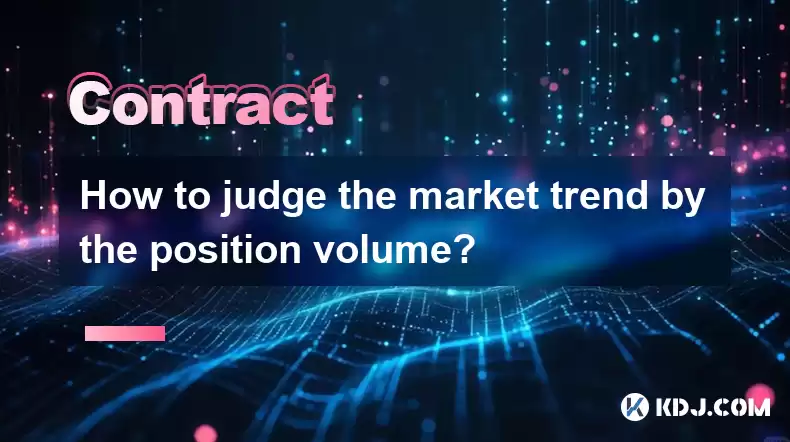-
 Bitcoin
Bitcoin $116700
0.24% -
 Ethereum
Ethereum $3973
4.34% -
 XRP
XRP $3.283
7.68% -
 Tether USDt
Tether USDt $1.000
0.01% -
 BNB
BNB $789.8
2.27% -
 Solana
Solana $176.2
3.31% -
 USDC
USDC $0.9999
0.00% -
 Dogecoin
Dogecoin $0.2238
5.14% -
 TRON
TRON $0.3389
-0.51% -
 Cardano
Cardano $0.7907
4.03% -
 Stellar
Stellar $0.4527
10.02% -
 Hyperliquid
Hyperliquid $41.07
4.27% -
 Sui
Sui $3.794
1.77% -
 Chainlink
Chainlink $19.49
10.40% -
 Bitcoin Cash
Bitcoin Cash $580.9
0.74% -
 Hedera
Hedera $0.2617
4.32% -
 Avalanche
Avalanche $23.41
3.67% -
 Ethena USDe
Ethena USDe $1.001
-0.03% -
 Litecoin
Litecoin $122.4
1.38% -
 Toncoin
Toncoin $3.364
1.49% -
 UNUS SED LEO
UNUS SED LEO $8.988
0.37% -
 Shiba Inu
Shiba Inu $0.00001295
2.82% -
 Uniswap
Uniswap $10.62
5.75% -
 Polkadot
Polkadot $3.922
4.46% -
 Dai
Dai $1.000
0.01% -
 Bitget Token
Bitget Token $4.494
2.15% -
 Monero
Monero $268.0
-1.30% -
 Cronos
Cronos $0.1523
3.68% -
 Pepe
Pepe $0.00001127
4.43% -
 Aave
Aave $285.4
4.85%
How to judge the market trend by the position volume?
Position volume, reflecting open long and short positions, helps traders gauge market sentiment and trends, enhancing decision-making in cryptocurrency trading.
Apr 11, 2025 at 02:29 pm

Understanding how to judge the market trend by position volume is crucial for any cryptocurrency trader. Position volume, which refers to the total number of open positions in a particular cryptocurrency, can provide valuable insights into market sentiment and potential price movements. By analyzing this data, traders can make more informed decisions about when to enter or exit the market. In this article, we will explore the various ways to interpret position volume and how it can be used to gauge market trends effectively.
Understanding Position Volume
Position volume is a key metric that reflects the total number of open long and short positions in a cryptocurrency at any given time. This data is often provided by cryptocurrency exchanges and can be accessed through trading platforms or third-party analytics tools. By examining the position volume, traders can gain insights into the overall market sentiment and the balance between bullish and bearish positions.
To access position volume data, traders can follow these steps:
- Log into your trading platform or exchange account.
- Navigate to the market data or analytics section.
- Look for the position volume or open interest data for the cryptocurrency you are interested in.
Analyzing Long and Short Position Volumes
One of the primary ways to judge market trends using position volume is by analyzing the ratio of long to short positions. Long positions represent bets on the price of a cryptocurrency increasing, while short positions are bets on the price decreasing. A higher number of long positions compared to short positions may indicate a bullish market sentiment, suggesting that the market trend could be upward. Conversely, a higher number of short positions may signal a bearish market sentiment, indicating a potential downward trend.
To analyze the long and short position volumes, traders can:
- Compare the total number of long positions to the total number of short positions.
- Calculate the ratio of long to short positions to determine the market sentiment.
- Monitor changes in this ratio over time to identify shifts in market trends.
Identifying Market Sentiment Shifts
Changes in position volume can also help traders identify shifts in market sentiment. Sudden increases in long position volume may indicate growing optimism among traders, suggesting that a bullish trend could be forming. On the other hand, sudden increases in short position volume may signal growing pessimism, indicating a potential bearish trend.
To identify market sentiment shifts using position volume, traders should:
- Monitor daily or hourly changes in position volume data.
- Look for significant spikes or drops in long or short position volumes.
- Correlate these changes with price movements to confirm potential trend shifts.
Using Position Volume to Confirm Price Trends
Position volume can also be used to confirm price trends. When a cryptocurrency's price is rising, and there is a corresponding increase in long position volume, this can confirm a bullish trend. Similarly, if the price is falling and there is an increase in short position volume, this can confirm a bearish trend. By aligning position volume data with price movements, traders can gain more confidence in their trend analysis.
To use position volume to confirm price trends, traders should:
- Track the price movements of the cryptocurrency.
- Compare these price movements with changes in long and short position volumes.
- Look for alignment between rising prices and increasing long positions, or falling prices and increasing short positions.
Detecting Potential Reversals
Position volume can also help traders detect potential market reversals. Divergences between price movements and position volume can be a warning sign of an impending reversal. For example, if the price of a cryptocurrency is rising, but the long position volume is decreasing, this could indicate that the bullish trend is losing steam and a reversal might be imminent. Similarly, if the price is falling, but the short position volume is decreasing, this could signal that the bearish trend is weakening.
To detect potential reversals using position volume, traders should:
- Monitor for divergences between price movements and position volume.
- Look for instances where the price is moving in one direction, but the corresponding position volume is moving in the opposite direction.
- Use these divergences as signals to prepare for potential trend reversals.
Combining Position Volume with Other Indicators
While position volume is a powerful tool for judging market trends, it is most effective when combined with other technical indicators. Moving averages, relative strength index (RSI), and volume can all provide additional context to the insights gained from position volume data. By integrating these indicators, traders can develop a more comprehensive understanding of market trends and make more informed trading decisions.
To combine position volume with other indicators, traders can:
- Use moving averages to identify long-term trends and confirm position volume signals.
- Apply the RSI to gauge the strength of price movements and validate position volume trends.
- Analyze trading volume alongside position volume to understand the intensity of market participation.
Frequently Asked Questions
Q: Can position volume be used to predict market trends accurately?
A: While position volume can provide valuable insights into market sentiment and potential trends, it should not be used as the sole predictor of market movements. It is most effective when combined with other technical indicators and fundamental analysis to form a more complete picture of the market.
Q: How often should I check position volume data?
A: The frequency of checking position volume data depends on your trading strategy. For short-term traders, monitoring position volume on an hourly or daily basis can be beneficial. Long-term traders may find it sufficient to check position volume data on a weekly or monthly basis.
Q: Are there any tools that can help me analyze position volume more effectively?
A: Yes, several trading platforms and third-party analytics tools offer advanced features for analyzing position volume. Some popular tools include TradingView, CoinGlass, and CryptoQuant, which provide detailed position volume data and customizable charts to help traders make more informed decisions.
Q: Can position volume data be manipulated by large traders or exchanges?
A: While it is possible for large traders or exchanges to influence position volume data to some extent, reputable exchanges and platforms have measures in place to prevent manipulation. It is important for traders to use data from trusted sources and to cross-reference position volume data with other market indicators to minimize the impact of potential manipulation.
Disclaimer:info@kdj.com
The information provided is not trading advice. kdj.com does not assume any responsibility for any investments made based on the information provided in this article. Cryptocurrencies are highly volatile and it is highly recommended that you invest with caution after thorough research!
If you believe that the content used on this website infringes your copyright, please contact us immediately (info@kdj.com) and we will delete it promptly.
- Roman Storm, Funding Effort, and the Looming Defense Retrial: A New York Minute on the Tornado Cash Case
- 2025-08-09 02:50:14
- Crypto's Wild Ride: XRP, Dogecoin, and the Altcoin Surge You Can't Ignore
- 2025-08-09 02:50:14
- Elon Musk, Bitcoin, and the Enduring Power of Approval: A Crypto Love Story?
- 2025-08-09 03:50:15
- Ruvi AI: The Next Big Thing After Ripple on CoinMarketCap?
- 2025-08-09 03:50:15
- Floki Price Surges: Elliott Wave and Fibonacci Setups Point to Potential Gains!
- 2025-08-09 02:30:16
- Pepe Price, RTX (Remittix?) & the $10K ETH Dream: NYC Crypto Chatter
- 2025-08-09 02:30:16
Related knowledge

What is the difference between realized and unrealized PNL on KuCoin?
Aug 09,2025 at 01:49am
Understanding Realized and Unrealized PNL on KuCoinWhen trading on KuCoin, especially in futures and perpetual contracts, understanding the distinctio...

How does KuCoin Futures compare against Binance Futures in terms of features?
Aug 09,2025 at 03:22am
Trading Interface and User ExperienceThe trading interface is a critical component when comparing KuCoin Futures and Binance Futures, as it directly i...

What is the distinction between mark price and last price on KuCoin?
Aug 08,2025 at 01:58pm
Understanding the Basics of Price in Cryptocurrency TradingIn cryptocurrency exchanges like KuCoin, two key price indicators frequently appear on trad...

What are the specific maker and taker fees on KuCoin Futures?
Aug 08,2025 at 08:28am
Understanding Maker and Taker Fees on KuCoin FuturesWhen trading on KuCoin Futures, users encounter two primary types of fees: maker fees and taker fe...

Can you explain the difference between cross margin and isolated margin on KuCoin?
Aug 09,2025 at 02:57am
Understanding Margin Trading on KuCoinMargin trading on KuCoin allows traders to borrow funds to increase their trading position beyond their actual c...

How can I open a long position on KuCoin Futures?
Aug 09,2025 at 02:07am
Understanding KuCoin Futures and Long PositionsOpening a long position on KuCoin Futures means you are speculating that the price of a cryptocurrency ...

What is the difference between realized and unrealized PNL on KuCoin?
Aug 09,2025 at 01:49am
Understanding Realized and Unrealized PNL on KuCoinWhen trading on KuCoin, especially in futures and perpetual contracts, understanding the distinctio...

How does KuCoin Futures compare against Binance Futures in terms of features?
Aug 09,2025 at 03:22am
Trading Interface and User ExperienceThe trading interface is a critical component when comparing KuCoin Futures and Binance Futures, as it directly i...

What is the distinction between mark price and last price on KuCoin?
Aug 08,2025 at 01:58pm
Understanding the Basics of Price in Cryptocurrency TradingIn cryptocurrency exchanges like KuCoin, two key price indicators frequently appear on trad...

What are the specific maker and taker fees on KuCoin Futures?
Aug 08,2025 at 08:28am
Understanding Maker and Taker Fees on KuCoin FuturesWhen trading on KuCoin Futures, users encounter two primary types of fees: maker fees and taker fe...

Can you explain the difference between cross margin and isolated margin on KuCoin?
Aug 09,2025 at 02:57am
Understanding Margin Trading on KuCoinMargin trading on KuCoin allows traders to borrow funds to increase their trading position beyond their actual c...

How can I open a long position on KuCoin Futures?
Aug 09,2025 at 02:07am
Understanding KuCoin Futures and Long PositionsOpening a long position on KuCoin Futures means you are speculating that the price of a cryptocurrency ...
See all articles

























































































